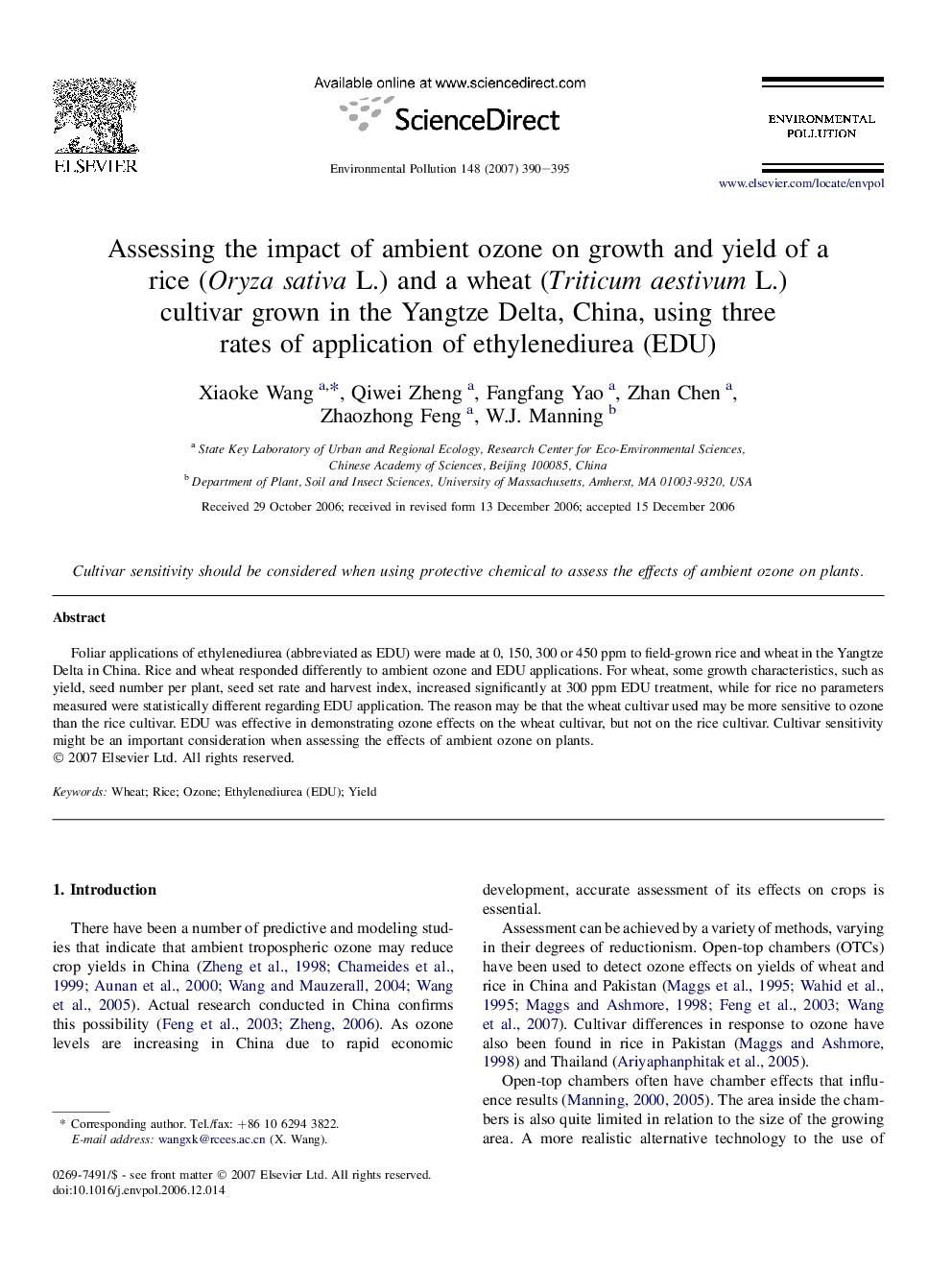| Article ID | Journal | Published Year | Pages | File Type |
|---|---|---|---|---|
| 4427603 | Environmental Pollution | 2007 | 6 Pages |
Foliar applications of ethylenediurea (abbreviated as EDU) were made at 0, 150, 300 or 450 ppm to field-grown rice and wheat in the Yangtze Delta in China. Rice and wheat responded differently to ambient ozone and EDU applications. For wheat, some growth characteristics, such as yield, seed number per plant, seed set rate and harvest index, increased significantly at 300 ppm EDU treatment, while for rice no parameters measured were statistically different regarding EDU application. The reason may be that the wheat cultivar used may be more sensitive to ozone than the rice cultivar. EDU was effective in demonstrating ozone effects on the wheat cultivar, but not on the rice cultivar. Cultivar sensitivity might be an important consideration when assessing the effects of ambient ozone on plants.
